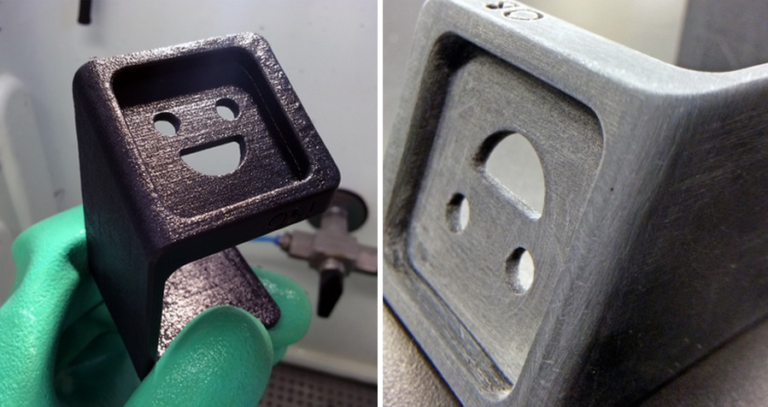YOU MIGHT ALSO BE INTERESTED IN

Recommended Wall Thickness for 3D Printing
Learn More

Methods for Cleaning 3D Printed Parts
Learn More
3D Printing Materials
Process
Lead Time
Colors
Resolution
Price
Applications
ABS-like is our closest representation of Injection Molded ABS in a printed material. It has the same high resolution appearance as VeroWhite, but the material is much stronger and more durable.
As with all PolyJet materials, there is less risk of warping or shrinkage on large parts because instead of heating and melting a plastic, this technology uses a UV light to cure a photopolymer resin.
Tensile Strength
Elongation at Break
Modulus of Elasticity
Flexural Strength
ABS-like is one of our highest resolution 3D printed materials (same as Vero), but is stronger and has a higher temperature resistance compared with Vero. The material finish is an opaque white and is perfect for high accuracy parts. The layering or stepping is minimally visible due to the color and high resolution of this manufacturing process.
Max Part Size [x, y, z]
Min Clearance + Gaps for Fit
Min Wall Thickness
Internal Cavities
Internal cavities are highly discouraged with ABS-LIKE due to the water-based support material that will swell and change the geometry overtime if left inside. Note that support material that has no direct line of sight inside a cavity cannot be cleaned out.
Threads & Inserts
For ABS-Like, we recommend you use either press or heat inserts.
Text Guidelines
Text should be embossed by at least 1.0 mm to stay visible after printing. Text should also be at least 1.5 mm thick in all areas.
Tolerance
Tolerance for ABS-Like is +/- 0.004”, or +/- 0.001” per inch, whichever is greater.
Learn More
Learn More